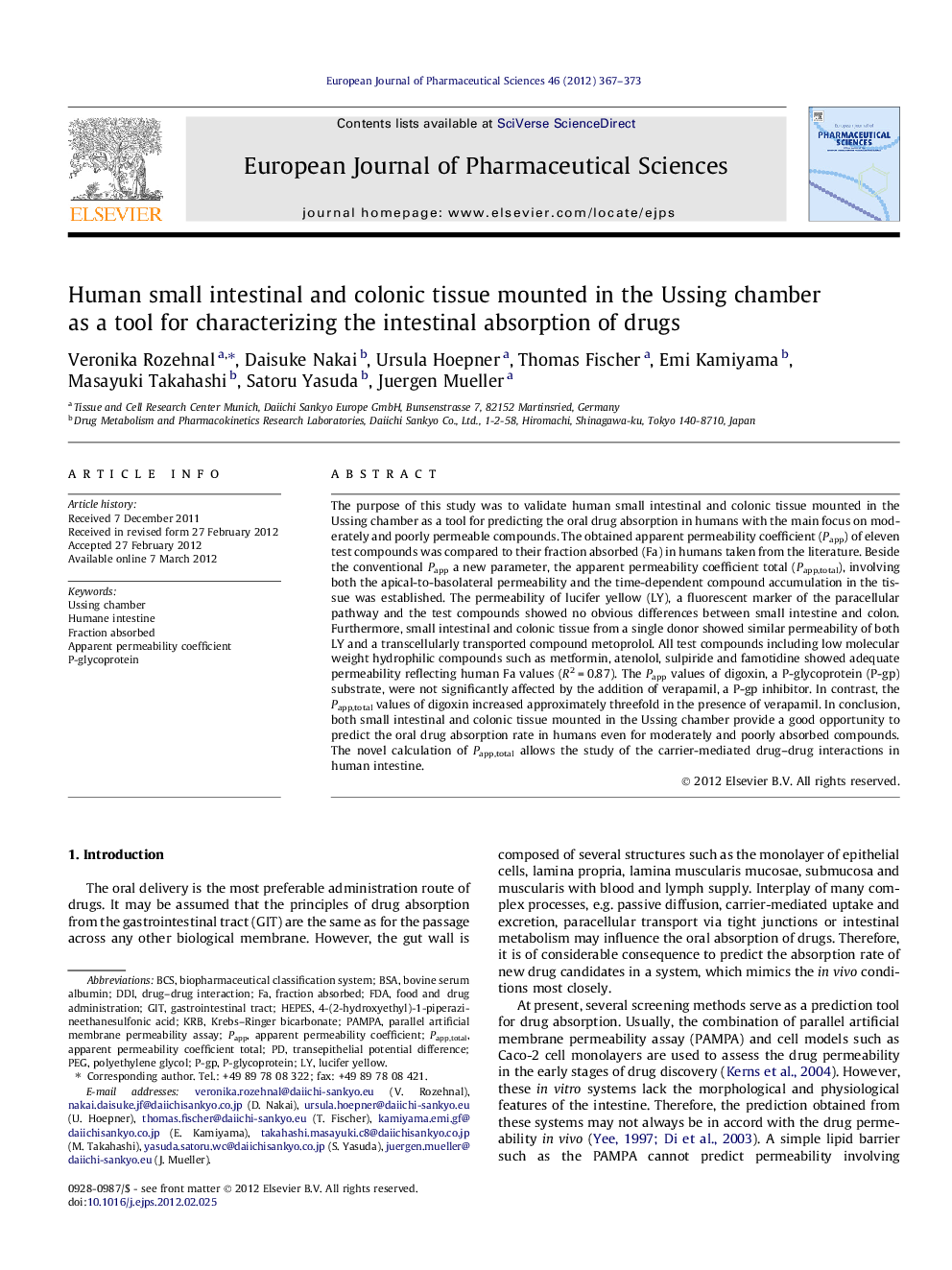| Article ID | Journal | Published Year | Pages | File Type |
|---|---|---|---|---|
| 2480948 | European Journal of Pharmaceutical Sciences | 2012 | 7 Pages |
The purpose of this study was to validate human small intestinal and colonic tissue mounted in the Ussing chamber as a tool for predicting the oral drug absorption in humans with the main focus on moderately and poorly permeable compounds. The obtained apparent permeability coefficient (Papp) of eleven test compounds was compared to their fraction absorbed (Fa) in humans taken from the literature. Beside the conventional Papp a new parameter, the apparent permeability coefficient total (Papp,total), involving both the apical-to-basolateral permeability and the time-dependent compound accumulation in the tissue was established. The permeability of lucifer yellow (LY), a fluorescent marker of the paracellular pathway and the test compounds showed no obvious differences between small intestine and colon. Furthermore, small intestinal and colonic tissue from a single donor showed similar permeability of both LY and a transcellularly transported compound metoprolol. All test compounds including low molecular weight hydrophilic compounds such as metformin, atenolol, sulpiride and famotidine showed adequate permeability reflecting human Fa values (R2 = 0.87). The Papp values of digoxin, a P-glycoprotein (P-gp) substrate, were not significantly affected by the addition of verapamil, a P-gp inhibitor. In contrast, the Papp,total values of digoxin increased approximately threefold in the presence of verapamil. In conclusion, both small intestinal and colonic tissue mounted in the Ussing chamber provide a good opportunity to predict the oral drug absorption rate in humans even for moderately and poorly absorbed compounds. The novel calculation of Papp,total allows the study of the carrier-mediated drug–drug interactions in human intestine.
